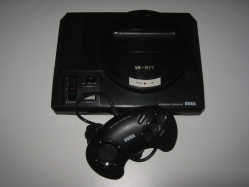
Autopsy:
from Wikipedia:
The Sega Megadrive is a fourth-generation video game console developed and produced by Sega. It was originally released in Japan in 1988 as Mega Drive (メガドライブ Mega Doraibu?), then in North America in 1989 as Sega Genesis, and in Europe, Australia and other PAL regions in 1990 as Mega Drive.
The reason for the two names is that Sega was unable to secure legal rights to the Mega Drive name in North America. The Sega Genesis is Sega’s third console and the successor to the Sega Master System with which it has backward compatibility when the separately sold Power Base Converter is installed.
The console was released in Japan as Mega Drive on October 29, 1988. Sega announced a North American release date for the system (as Sega Genesis) on January 9, 1989. Sega initially attempted to partner with Atari Corporation for distribution of the console in the US, but the two could not agree to terms and Sega decided to do it themselves. Sega was not able to meet the initial release date and US sales began on August 14, 1989 in New York City and Los Angeles. The Sega Genesis was released in the rest of North America later that year on September 15, 1989 with the suggested retail price of $189.99, $10 less than originally planned, and also $10 less than the competing TurboGrafx-16.
The Mega Drive’s CPU is a 16/32-bit Motorola 68000. The maximum addressable memory is 16 MB from the ROM ($00000000-00400000 – 4 MB), to the RAM ($00FF0000-00FFFFFF – 64 KB). The 68000 runs at 7.61 MHz in PAL consoles, 7.67 MHz in NTSC consoles. The Mega Drive also includes a Zilog Z80, which serves as secondary processor along with allowing complete Master System compatibility with only a passive adapter. The initial Mega Drive models used a Hitachi-made HD68HC000, while the Mega Drive 2 and later models used a Motorola MC68HC000, both fabricated in CMOS.
source: wikipedia

Autopsy:
The boxed version of the console can be found here.
from Wikipedia:
The Sega Megadrive is a fourth-generation video game console developed and produced by Sega. It was originally released in Japan in 1988 as Mega Drive (メガドライブ Mega Doraibu?), then in North America in 1989 as Sega Genesis, and in Europe, Australia and other PAL regions in 1990 as Mega Drive.
The reason for the two names is that Sega was unable to secure legal rights to the Mega Drive name in North America. The Sega Genesis is Sega’s third console and the successor to the Sega Master System with which it has backward compatibility when the separately sold Power Base Converter is installed.
The console was released in Japan as Mega Drive on October 29, 1988. Sega announced a North American release date for the system (as Sega Genesis) on January 9, 1989. Sega initially attempted to partner with Atari Corporation for distribution of the console in the US, but the two could not agree to terms and Sega decided to do it themselves. Sega was not able to meet the initial release date and US sales began on August 14, 1989 in New York City and Los Angeles. The Sega Genesis was released in the rest of North America later that year on September 15, 1989 with the suggested retail price of $189.99, $10 less than originally planned, and also $10 less than the competing TurboGrafx-16.
The Mega Drive’s CPU is a 16/32-bit Motorola 68000. The maximum addressable memory is 16 MB from the ROM ($00000000-00400000 – 4 MB), to the RAM ($00FF0000-00FFFFFF – 64 KB). The 68000 runs at 7.61 MHz in PAL consoles, 7.67 MHz in NTSC consoles. The Mega Drive also includes a Zilog Z80, which serves as secondary processor along with allowing complete Master System compatibility with only a passive adapter. The initial Mega Drive models used a Hitachi-made HD68HC000, while the Mega Drive 2 and later models used a Motorola MC68HC000, both fabricated in CMOS.
source: wikipedia

Autopsy:
from Wikipedia:
The Sega Megadrive is a fourth-generation video game console developed and produced by Sega. It was originally released in Japan in 1988 as Mega Drive (メガドライブ Mega Doraibu?), then in North America in 1989 as Sega Genesis, and in Europe, Australia and other PAL regions in 1990 as Mega Drive.
The reason for the two names is that Sega was unable to secure legal rights to the Mega Drive name in North America. The Sega Genesis is Sega’s third console and the successor to the Sega Master System with which it has backward compatibility when the separately sold Power Base Converter is installed.
The console was released in Japan as Mega Drive on October 29, 1988. Sega announced a North American release date for the system (as Sega Genesis) on January 9, 1989. Sega initially attempted to partner with Atari Corporation for distribution of the console in the US, but the two could not agree to terms and Sega decided to do it themselves. Sega was not able to meet the initial release date and US sales began on August 14, 1989 in New York City and Los Angeles. The Sega Genesis was released in the rest of North America later that year on September 15, 1989 with the suggested retail price of $189.99, $10 less than originally planned, and also $10 less than the competing TurboGrafx-16.
The Mega Drive’s CPU is a 16/32-bit Motorola 68000. The maximum addressable memory is 16 MB from the ROM ($00000000-00400000 – 4 MB), to the RAM ($00FF0000-00FFFFFF – 64 KB). The 68000 runs at 7.61 MHz in PAL consoles, 7.67 MHz in NTSC consoles. The Mega Drive also includes a Zilog Z80, which serves as secondary processor along with allowing complete Master System compatibility with only a passive adapter. The initial Mega Drive models used a Hitachi-made HD68HC000, while the Mega Drive 2 and later models used a Motorola MC68HC000, both fabricated in CMOS.
source: wikipedia
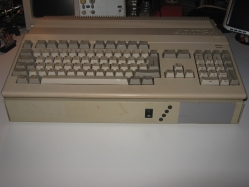
Autopsy:
Amiga 500 Zorro card adapter by Hardital, an Italian company based in Milan. With this configuration you could use the Flashbank MFM Hard Disk controller card for Amiga 2000 on the Amiga 500.
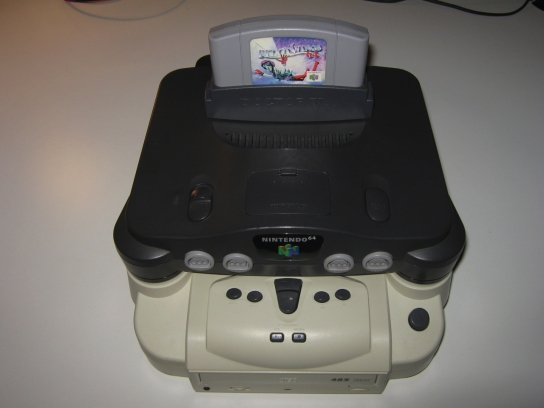
Autopsy:
from Wikipedia:
The Doctor V64 (also referred to simply as the V64) is a development and backup device made by Bung Enterprises Ltd that is used in conjunction with the Nintendo 64. The Doctor V64 also had the ability to play Video CDs, audio CDs and had an option for applying stereo 3D effects to the audio.
The Doctor V64 came out in 1996 and was priced around $450 USD. Many third party developers used the V64 in lieu of the PC64 Development Kit sold by Nintendo; the V64 was considered an attractive, low cost alternative to the expensive N64 development machine, which was manufactured by Silicon Graphics at the time. The CPU of the V64 is a 6502 chip (the CPU from the Nintendo Entertainment System); the operating system is stored in the BIOS chip. It is likely that Bung reused most of the design of their earlier NES clones in the Doctor V64.
The Doctor V64 unit contains a CD-ROM drive which sits underneath the Nintendo 64 and plugs into the expansion slot on the underside of the Nintendo 64. The expansion slot is essentially a mirror image of the cartridge slot on the top of the unit, with the same electrical connections, thus the Nintendo 64 reads data from the Doctor V64 in the same manner as it would from a cartridge plugged into the normal slot.
source: wikipedia
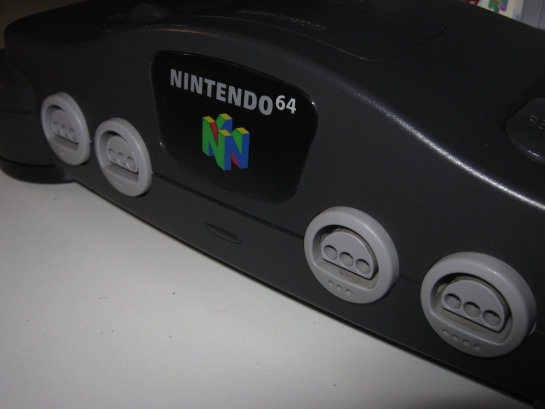
Autopsy:
from Wikipedia:
The Nintendo 64 (ニンテンドウ64 Nintendō Rokujūyon?), often referred to as N64, is Nintendo′s third home video game console for the international market.
Named for the 64-bit CPU, it was released in June 1996 in Japan, September 1996 in North America, March 1997 in Europe and Australia, September 1997 in France and December 1997 in Brazil. It is Nintendo′s last home console to use ROM cartridges to store games (Nintendo switched to a MiniDVD-based format for the successor GameCube); handhelds in the Game Boy line, however, continued to use Game Paks. It was discontinued in 2002 in Japan, North America and PAL regions by the launch of Nintendo′s GameCube.
The N64 was released with two launch games, Super Mario 64 and Pilotwings 64, and a third in Japan, Saikyō Habu Shōgi. The N64′s suggested retail price was US$199 at its launch and it was later marketed with the slogan “Get N, or get Out!”. The console was released in at least eight variants with different colors and sizes. An assortment of limited edition controllers were sold or used as contest prizes during the N64′s lifespan. The N64 sold 32.93 million units worldwide, and in 2009 it was named the 9th greatest video game console by IGN, out of a field of 25. The N64 was a very popular main prize on Double Dare 2000.
source: wikipedia
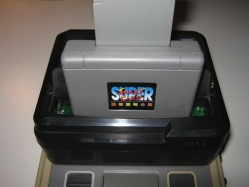
Autopsy:
This is one of the first cartridges based on Flash Memory for the Nintendo Gameboy and Sega Gamegear.
The use is quite complex and you must do via the Super Wildcard DX, the Super Smart Card programmer is inserted into the free slot of the Super Wildcard DX and over this the Flash Cartridge.
The file transfer of the games in format .GB/.GG are done by a pre-loaded software through the backup unit.
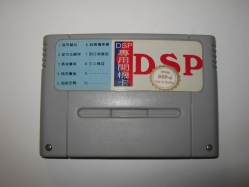
Autopsy:
The Super Nintendo DSP 4 cartridge made by Front FarEast is a cartridge addon for the Super Wildcard DX.
When you using this cartridge you will can play some games for the Super Nintendo that use special chips inside the cartridges (DSP) and not present in the original backups (files).
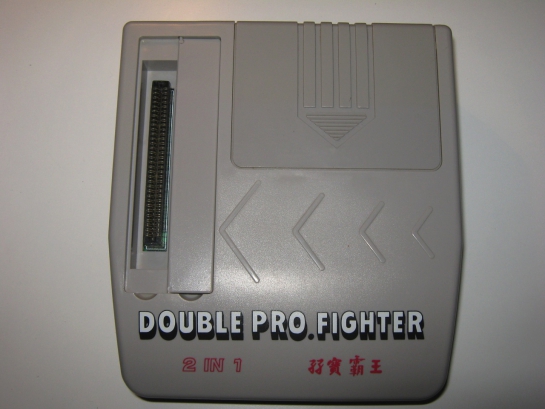
Autopsy:
The Double Pro Fighter is a Backup Copier for Super Nintendo (Super Nes / Famicom) and Sega Megadrive (Sega Genesis) made by China Coach Limited, and shipped with 16 megabits (2 megabytes) of RAM, expandable up to 32 megabits.
The top of the unit contains two females cartridge port for inserting SNES cartridges and Megadrive (Genesis) cartridges. The left hand side contains the floppy drive. The bottom of the unit contains two male cartridge port that inserts into the Super Nintendo or Megadrive (Genesis).
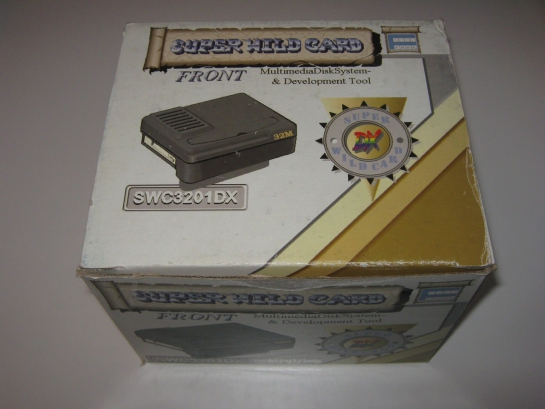
Autopsy:
The Super Wildcard DX is a Backup Copier for Super Nintendo (Super Nes / Famicom) made by Front FarEast (FFE), and shipped with 32 megabits (4 megabytes) of RAM, expandable up to 96 megabits.
The top of the unit contains a female cartridge port for inserting SNES cartridges. The left hand side contains the floppy drive. The bottom of the unit contains the male cartridge port that inserts into the Super Nintendo on the back you can found the parallel port to interface with the computer.
When powered on, the unit launches into a graphical menu. Each of the menu’s 8 items lead to sub-menus:
- Wildcard Options allows users to run programs, transfer cartridges to disk, edit memory or obtain program information.
- Disk options allow users to format disks, rename files, delete files, edit files, and copy files.
- Realtime Save Options allow users to backup and restore real time save data.
- Password options allow users to edit, backup and restore passwords, and search for cheat codes.
- Cart options allow users to run a cartridge, transfer programs, transfer battery RAM, and edit memory.
- Game/Utility options include a PCX picture viewer, a freeware game (Shingles), and a demo (in Chinese).
- Setup options include screen setup, user message, and reset to default.
- Diagnostics include self test, Wildcard info, System info, and credits
The Super Wild Card DX it’s fast, simple to use, and reliable. Its memory editing capabilities and password features greatly expand the functionality of the SNES, and it’s high compatibility means almost anything can be dumped and played.
Download: Super Wildcard DX (EPROM & EEPROM DUMP) (669)
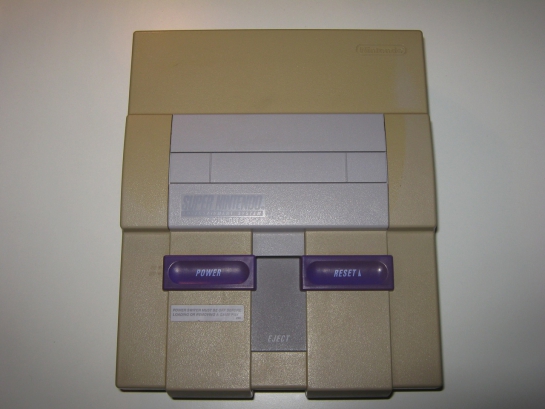
Autopsy:
from Wikipedia:
The Super Nintendo Entertainment System (also known as the Super NES, SNES or Super Nintendo) is a 16-bit video game console that was released by Nintendo in North America, Europe, Australasia (Oceania), and South America between 1990 and 1993.
In Japan and Southeast Asia, the system is called the Super Famicom (スーパーファミコン?, officially adopting the abbreviated name of its predecessor, the Family Computer), or SFC for short. In South Korea, it is known as the Super Comboy (슈퍼 컴보이) and was distributed by Hyundai Electronics. Although each version is essentially the same, several forms of regional lockout prevent the different versions from being compatible with one another.
Designed by Masayuki Uemura, the designer of the original Famicom, the Super Famicom was released in Japan on Wednesday, November 21, 1990 for ¥25,000 (US$210). It was an instant success: Nintendo’s initial shipment of 300,000 units sold out within hours, and the resulting social disturbance led the Japanese government to ask video game manufacturers to schedule future console releases on weekends. The system’s release also gained the attention of the Yakuza, leading to a decision to ship the devices at night to avoid robbery.
source: wikipedia
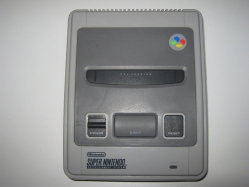
Autopsy:
from Wikipedia:
The Super Nintendo Entertainment System (also known as the Super NES, SNES or Super Nintendo) is a 16-bit video game console that was released by Nintendo in North America, Europe, Australasia (Oceania), and South America between 1990 and 1993.
In Japan and Southeast Asia, the system is called the Super Famicom (スーパーファミコン?, officially adopting the abbreviated name of its predecessor, the Family Computer), or SFC for short. In South Korea, it is known as the Super Comboy (슈퍼 컴보이) and was distributed by Hyundai Electronics. Although each version is essentially the same, several forms of regional lockout prevent the different versions from being compatible with one another.
Designed by Masayuki Uemura, the designer of the original Famicom, the Super Famicom was released in Japan on Wednesday, November 21, 1990 for ¥25,000 (US$210). It was an instant success: Nintendo’s initial shipment of 300,000 units sold out within hours, and the resulting social disturbance led the Japanese government to ask video game manufacturers to schedule future console releases on weekends. The system’s release also gained the attention of the Yakuza, leading to a decision to ship the devices at night to avoid robbery.
source: wikipedia
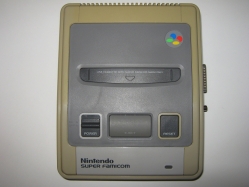
Autopsy:
With this console and the Backup unit Super Wildcard DX in the 90′s the Nightfall group has released several Trainer / Crack and Demo for the Snes / Famicom scene.
from Wikipedia:
The Super Nintendo Entertainment System (also known as the Super NES, SNES or Super Nintendo) is a 16-bit video game console that was released by Nintendo in North America, Europe, Australasia (Oceania), and South America between 1990 and 1993.
In Japan and Southeast Asia, the system is called the Super Famicom (スーパーファミコン?, officially adopting the abbreviated name of its predecessor, the Family Computer), or SFC for short. In South Korea, it is known as the Super Comboy (슈퍼 컴보이) and was distributed by Hyundai Electronics. Although each version is essentially the same, several forms of regional lockout prevent the different versions from being compatible with one another.
Designed by Masayuki Uemura, the designer of the original Famicom, the Super Famicom was released in Japan on Wednesday, November 21, 1990 for ¥25,000 (US$210). It was an instant success: Nintendo’s initial shipment of 300,000 units sold out within hours, and the resulting social disturbance led the Japanese government to ask video game manufacturers to schedule future console releases on weekends. The system’s release also gained the attention of the Yakuza, leading to a decision to ship the devices at night to avoid robbery.
source: wikipedia
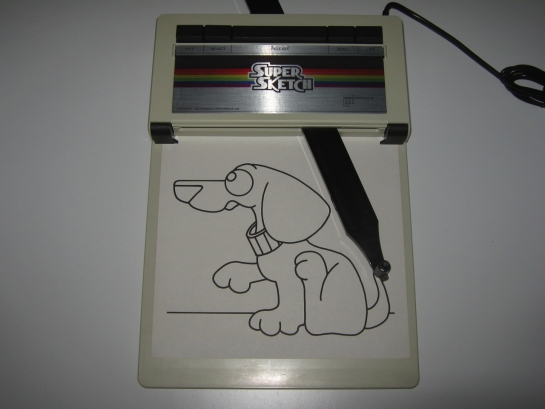
Autopsy:
Introduction: Super Sketch for Commodore 64 is a fun device for either child or adult. In addition, it provides the easiest possible introduction into the use of a computer. Its menu-driven command system provides an intuitive method of operation that is easy to learn for the first-time Computer user.
Art and Design: Super Sketch provides the lowest cost introduction to the world of Computer Graphics. It is a excellent new medium for the artist and a design vehicle for many graphics applications.
In this rainy day i have decided to commit myself to create a boot floppy disk for my Tandy Radio Shack TRS-80 Model 4P.
The right steps to create the boot disk:
Download LS-DOS or TRSDos (DMK version) floppy image from here , now you need to use the DMK2IMD program, a tool inside the package ImageDisk to convert the DMK floppy image to IMD (ImageDisk), then … burn it with ImageDisk.
Download:















































































































































































































Recent Comments